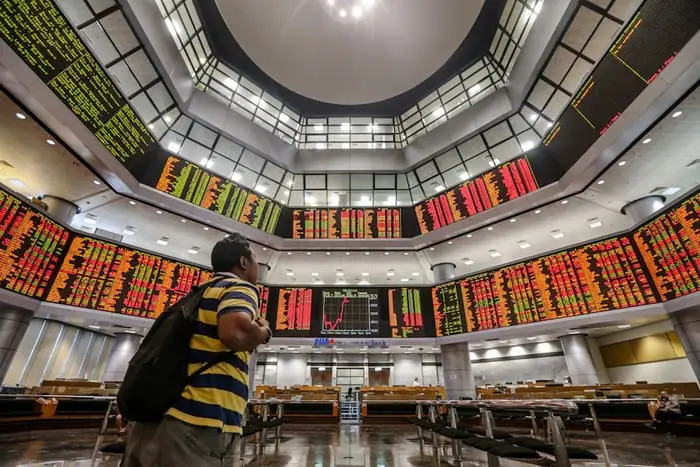Alex Cheong Pui Yin
2nd April 2024 - 12 min read

Retail investors in Malaysia would be familiar with the assortment of popular investment products, like unit trusts, bonds, exchange-traded funds (ETFs), and of course, stocks. But as you grow to become a more seasoned investor, you may also begin to explore alternatives that can give you more control and (possibly) enhanced returns – such as structured warrants.
As an investment instrument, structured warrants are not new; they are tradeable in stock markets around the world including in our very own Bursa Malaysia. In 2022 alone, the total trade value of structured warrants in Bursa Malaysia amounted to RM13.83 billion, and demand for these derivatives are expected to increase as retail investors in Malaysia grow more sophisticated. If you’ve heard of structured warrants or terms like “call warrants” and “put warrants” and are curious how they work, then this article is just right for you!
We’ll take a look at some fundamental details that all structured warrant investors should know, and break things down into digestible bits for you – so let’s go!
What are structured warrants?

Simply put, structured warrants are a form of derivatives – a type of contract that gives you the option and the right to buy or sell an underlying asset (like stocks, commodities, or market indices) at a predetermined price within a specified time frame. You are, however, not obligated to go through with the contract if you do not wish to. As such, structured warrants have an inherent value that fluctuates throughout its life cycle.
Sounds confusing? Here’s a simple analogy: conceptually, you can think of structured warrants as tickets to a Taylor Swift concert – it gives you the right to attend the concert on a specific date, but you don’t necessarily have to attend it. You could, for example, sell it to a friend who didn’t manage to get tickets. Or you resell them for a tidy profit as demand for the ticket grows. But if you hold on to it for too long waiting for the highest bidder and you fail to sell it, your ticket will have zero value after the concert.
Structured warrants are typically issued by investment banks, and there are two types: call warrants and put warrants.
How do call and put warrants work?

Let’s start with call warrants. Call warrants give you the right to buy the underlying stock at a predetermined price (also known as the exercise or strike price) at any time before the warrant expires. Call warrants are tradeable just like normal stocks, and their prices generally follow the trend of the underlying stock (sometimes known as the “mother share/stock”). Typically, you’d buy call warrants if you believe that the market price of the mother share will rise above the strike price in the future, allowing you to gain profit.
We’ll put this into a scenario for easier understanding. Let’s say that you believe the market price of Stock A is going to increase to RM5 in the next six months. So you purchase a call warrant that costs RM0.50, with an exercise price of RM2.00, executable in the next six months.
If the market price of Stock A does indeed increase to RM5 as per your expectation, you can then go ahead and exercise your warrant at RM2.00, effectively letting you own an RM5 stock at RM2.50, giving you a “paper profit” of RM2.50 per warrant owned, calculated as RM5 – (RM2 + RM0.50). This is a situation called “in the money”, where you earn a profit.
Of course, this is a positive scenario; there is also always the risk of the stock going the opposite way, where the price of Stock A stays less than the exercise price of RM2.00 – which means you’ll incur losses (“out of money”).

Put warrants, on the other hand, work in the exact opposite manner, letting you sell the underlying stock at the exercise price within a limited period. It is typically purchased by those who believe that the mother stock’s share price will dip in the future; this is somewhat similar to shorting a stock.
Using Stock A as an example again, let’s say that your analysis leads you to believe that its price will drop to RM1 in the future, so you purchase a put warrant (also at a price of RM0.50) that has an exercise price of RM2.50, with a validity of six months. Once again, if your analysis proves to be true, it means that you’ll be gaining a paper profit of RM1 per warrant owned (RM2.50 – [RM1 + RM0.50]) because you’re exercising your warrant at a price that’s above the market rate.
Now, in both examples, exercising your structured warrant against the market price of the underlying stock is just one way to earn profit via the warrant. Another way to utilise warrants is to trade the warrant that you’ve purchased. As stated earlier in this section, because warrant prices move in tandem with the mother share, your paper profit doesn’t occur only after converting the warrants to the mother share – you can also sell the warrant itself in the market to immediately realise your profits at a fraction of the cost it would have been to trade in the mother share. This is also why structured warrants are also known as “small knives that can cut big trees”.
In the meantime, note that you can easily distinguish if a structured warrant is a call or put warrant by checking the fifth label (an alphabet) on its stock code; call warrants are labelled with C, whereas the label for put warrants is H. So as an example, a warrant with the code 5318CA is a call warrant, whereas 1155HB is a put warrant. The last letter is the code for the issuing party.
What are the benefits of investing with structured warrants?

There are several benefits that drive investors to include structured warrants as part of their investment strategy, and here, we’ll touch on three more important ones:
1) Lower capital required
Structured warrants allow you to gain exposure to stocks – especially blue-chip stocks – for a fraction of the price that you’d have to pay if you were to purchase the stock directly. With warrants, investors with limited funds can tap into the benefits of a potential price increase or dip.
Not only that, with the lower capital required, investors can free up their money for other types of holdings or investment offerings. This, in turn, reduces opportunity cost, and indirectly enables the diversification of your portfolio.
2) Leveraging/Gearing effect

Essentially, gearing/leveraging measures the impact that a change to the mother share’s price would have on the warrant price (in percentage). So as an example, if a warrant is said to have an effective gearing of 10x, it means that for every 1% change in the mother share’s price, the warrant’s price would move by 10%.
Following in that vein, structured warrants are known to offer a high gearing effect, where the warrant prices would move in greater percentages than the underlying shares. As such, you would have the potential for considerably higher returns than if you were to buy the mother shares directly.
The gearing effect is especially relevant to investors who trade warrants (as opposed to those who want to exercise it) because every upward movement in the price of the underlying asset could mean a big jump in the profit that they can reap.
To illustrate this, let’s say you’ve bought the call warrant for Stock X at the price of RM0.50, and this warrant is said to have an effective gearing of 10 times. Meanwhile, Stock X itself is currently valued at RM2 on the market. If the value of Stock X were to increase by 5%, it would only go up by RM0.10 (to RM2.10). The value of its call warrant, on the other hand, will go up significantly by 50% (to RM0.75), thanks to its effective gearing ratio of 10 – thereby earning you a substantial profit once you sell this warrant at its new price. (Note: bear in mind this is a very simple example to illustrate the gearing effect; there are other factors that come into play)
Investors should also note that gearing/leveraging goes both ways, which will be discussed in the next section.
3) Opportunity to profit from both the rise and fall of asset price

Warrants provide you with the opportunity to profit from both stock price increases or falls. This is also why sophisticated investors trade a mix of warrants that allow them to make profits in both bull and bear markets.
Some investors may even tap into put warrants as part of their hedging strategy, thereby protecting their portfolio against a bearish market. As you would recall, put warrants let you profit from a share’s downward movements, so in the event of a decline in share price, your portfolio may still yield some gains.
What about the risks and disadvantages of investing in structured warrants?

While structured warrants can be attractive to investors due to their inherent benefits, there are also some risks that you should be aware of.
1) Increased exposure to losses due to gearing/leveraging
The gearing effect can be a great boon in boosting your profits, but it is also a double-edged sword that can magnify your losses if you don’t. Remember the example of Stock X and its call warrant (with a gearing of 10) from before? If Stock X fails to perform and its prices fall by 5% instead, your loss will also be amplified to 50%.
Because of this, you must always do your due diligence carefully before purchasing warrants, ensuring that you can make the best-informed decisions.
A silver lining, though: although losses can be amplified when investing in structured warrants, they will only be limited to your capital (i.e. your initial investment amount). Therefore, the downside is capped but the upside is not, which is why experienced traders – especially swing traders or momentum traders – prefer trading with warrants. This is unlike some other investment instruments, such as futures, which allow you to purchase assets with borrowed money – thereby exposing your downside risk even further.
2) Limited lifespan

Structured warrants have maturity dates, and as such, may expire before your targets are achieved. When a warrant expires, it will no longer hold any value, resulting in a 100% loss if you hold on to it without exercising your option to purchase the mother share.
Additionally, structured warrants have relatively short life cycles (anywhere between six months and up to five years). As such, there’s also a “time decay” phenomenon where their value reduces over time irrespective of the mother share’s price. This effect becomes more pronounced as the expiration date gets closer.
As such, they are not meant for long-term investment holdings, and must also be actively monitored more frequently. It is better suited for active traders who can make quick decisions to secure profits.
3) You don’t get the same privileges as a shareholder

This is not so much a risk as a disadvantage for some investors who invest in mother shares directly. If you invest in the mother shares itself, you will be entitled to certain rights as a shareholder, such as being eligible for dividends as well as being entitled to voting rights for certain matters.
Meanwhile, those who own structured warrants will not be afforded these privileges or perks, because you do not actually own the mother shares.
What else should you know about structured warrants?

Investing in structured warrants is different from investing in mother shares. This is because structured warrants have features that make them more complex than regular investment instruments.
As an example, aside from stocks, some structured warrants can also be linked to various other underlying assets, including commodities, exchange traded funds, and even market indices. Each underlying asset may have its unique characteristics and dynamics, and this adds a layer of complexity to the process of understanding and trading structured warrants.
Other features or terminologies of structured warrants that advanced investors would also want to familiarise themselves with include exercise ratio (also referred to as conversion ratio), premium, as well as time value and time decay. While we will not be elaborating on the details of these elements (this is an article for beginners, after all), it’s crucial to recognise that there is more to learn as you gain further experience in this instrument.
###
As we’ve highlighted, there’s plenty more to learn about structured warrants, and if you’re keen to see how they work in real markets, you check them out during trading hours in Bursa Malaysia. This will give you the best experience to understand how its leverage factor works. If you want to learn more, Bursa Malaysia and the investment banks that issue structured warrants have plenty of materials for you as well.

One such issuer is Affin Hwang Investment Bank Berhad (AHIBB), who entered the market as a new issuer back in January 2023, with the issuance of four structured warrants. As of the time of writing, it has listed structured warrants with underlying assets from IOI Corporation Bhd, WCE Holdings Bhd, Supermax Corporation, Inari Amertron Bhd, and YTL Power International Bhd.
You can find out more about Affin Hwang Investment Bank’s structured warrants on its official website here and official Telegram channel for more daily info update.





Comments (0)